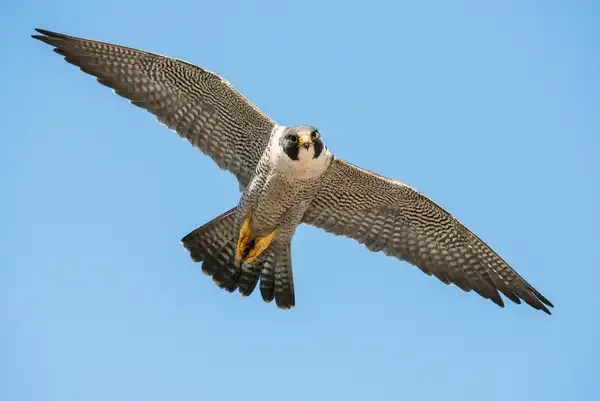- Home >
- Science
- > Innovation
What Is the Most Aerodynamic Animal?
The peregrine falcon is often considered the most aerodynamic animal, known for its incredible speed and agility in flight. This bird of prey can reach speeds over 240 miles per hour during its characteristic hunting stoop, or dive. Its streamlined body, pointed wings, and powerful muscles allow it to cut through the air with minimal resistance. The falcon's specialized feathers reduce drag, while a unique respiratory system provides efficient oxygen intake, enabling it to maintain high speeds and maneuverability.

When exploring the world of aerodynamics, it’s fascinating to examine how different animals have evolved to achieve remarkable efficiency in movement through air. From birds to insects, nature has provided us with an array of examples that showcase the principles of aerodynamics. In this article, we will delve into the question: What is the most aerodynamic animal? We will analyze various candidates and their adaptations that contribute to their aerodynamic prowess.
The Top Contenders for the Title of Most Aerodynamic Animal
To determine the most aerodynamic animal, we can look at several key characteristics, such as body shape, wing structure, and flight patterns. Below is a chart summarizing some of the most aerodynamic animals based on their design and performance in flight:
| Animal | Body Shape | Wing Structure | Flight Speed (mph) |
|---|---|---|---|
| Common Swift | Streamlined | Long, pointed wings | 69 |
| Peregrine Falcon | Compact | Short, pointed wings | 240 |
| Albatross | Large, flat | Long wingspan | 79 |
| Dragonfly | Sleek | Two pairs of wings | 35 |
Analysis of Aerodynamic Features
Each of the animals listed in the chart exhibits unique features that enhance their aerodynamic abilities. Let’s take a closer look at some of the most notable contenders.
Common Swift
The Common Swift has a streamlined body that reduces drag as it flies. With long, pointed wings, this bird is built for speed, capable of reaching a remarkable 69 mph. The swift's incredible agility allows it to maneuver easily through the air, making it one of the most efficient flyers in the animal kingdom.
Peregrine Falcon
The Peregrine Falcon holds the title for the fastest animal on the planet. With its compact body and short, pointed wings, it can achieve speeds of up to 240 mph during its hunting stoop (high-speed dive). This incredible velocity is a result of its aerodynamic shape, which minimizes air resistance and allows for rapid acceleration. The peregrine falcon’s unique adaptations, such as its specialized respiratory system, further enhance its performance during flight.
Albatross
The majestic Albatross boasts a large wingspan that allows it to glide effortlessly over vast distances. Its flat body and long wings enable the bird to ride wind currents, achieving speeds of 79 mph without expending much energy. This gliding ability is essential for the albatross, as it spends a significant amount of time over the ocean, searching for food.
Dragonfly
In the insect world, the Dragonfly is a remarkable example of aerodynamic design. With a sleek body and two pairs of wings, dragonflies can achieve speeds of up to 35 mph. Their unique wing structure allows for incredible maneuverability, enabling them to hover, dart, and even fly backward. This versatility makes them highly effective predators in their environment.
Comparative Aerodynamics
When comparing these aerodynamic champions, it is essential to consider not just speed but also efficiency and adaptability. While the peregrine falcon is the fastest, the common swift and albatross offer exceptional efficiency in their respective environments. The dragonfly, on the other hand, showcases a unique ability to maneuver with precision, making it a formidable hunter.
Implications for Engineering
The study of these aerodynamic animals has significant implications for engineering and design. By understanding the principles that allow these creatures to fly efficiently, engineers can develop better designs for aircraft and drones. The biomimicry movement draws inspiration from nature, leading to innovations in areas such as aerodynamics, flight technology, and energy efficiency.
Conclusion
In conclusion, while the Peregrine Falcon may claim the title of the fastest animal, each contender brings unique aerodynamic features to the table. The Common Swift, Albatross, and Dragonfly all showcase remarkable adaptations that enhance their flight capabilities. By studying these animals, we not only gain insight into the wonders of nature but also pave the way for advancements in technology and engineering. As we continue to explore the fascinating world of aerodynamics, these animals will undoubtedly remain at the forefront of our understanding.












